My husband’s ancestor, Frank L. Fay, was a telegram messenger boy in Cleveland, Ohio, in the early 1880’s.
From Wikipedia:
Telegraph boys (also referred to as district messenger boys, telegraph messenger boys, or simply as messenger boys) were uniformed young men between 10 and 18 years of age who, mounted on bicycles, carried telegrams through urban streets. Unlike the men in the telegraph office who worked indoors on fixed wages under close supervision, enjoyed union benefits, and managed the electrical transfer of information, telegraph boys worked outdoors under no supervision on piece wages, saw no union benefits, and managed the physical aspect of the industry in the form of handwritten or printed paper messages.
Boys reported for work in the morning clad in their uniforms and awaited their assignments, receiving payment by the mile. Though some chose to travel by foot, bicycles were required for distant destinations. John Dickinson of Dallas, Texas accumulated more than 16,000 miles between April and September 1916. Western Union bought 5,000 bicycles a year and resold them to their telegraph boys nationwide at a discount. A local fleet might number from one to three dozen or more. Companies were responsible for providing uniform laundries, locker rooms, assembly halls, and classrooms.
In the call-box system developed in 1872, a customer would “ring” the telegraph office for a messenger who would then speed to the customer’s door to pick up a handwritten message and return to the telegraph office to have it sent electrically to its destination.
The life could be dangerous. Boys were expected to “scorch” their bicycles in urban traffic. Strikes occurred with messenger boys cycling en masse to keep scabs from being hired. Boys attended continuation schools on a four-hours-per-week schedule rather than the 36-hour schedule of public schools. During slack times, the telegraph office hid the boys from public view in basements and back rooms where they smoked, read penny dreadfuls, and shot craps. Weekends or evenings might involve taking part in uniformed military drills before the public. At night, the boys might be required to enter the red light districts in connection with their job duties. The demand for telegraph boys fell when companies began reading messages over the telephone.
References
Herlihy, David V. Bicycle: The History. Yale University press, 2004. ISBN 0-300-10418-9. p. 318.
Downey, Greg (1999-11-?). “Information Networks and Urban Spaces: The Case of the Telegraph Messenger Boy”. Mercurians.
Messenger Boy Photo Gallery
While we don’t have a photograph of Frank as a boy messenger, we can get some idea of this period of his life from the photos below. Many of the photographs were taken by Hine and are available through the Library of Congress. Below, a description of the collection from their website.
Working as an investigative photographer for the National Child Labor Committee (NCLC), Lewis Hine (1874-1940) documented working and living conditions of children in the United States between 1908 and 1924. The NCLC photos are useful for the study of labor, reform movements, children, working class families, education, public health, urban and rural housing conditions, industrial and agricultural sites, and other aspects of urban and rural life in America in the early twentieth century.
The collection consists of more than 5,100 photographic prints and 355 glass negatives, given to the Library of Congress, along with the NCLC records, in 1954 by Mrs. Gertrude Folks Zimand, acting for the NCLC in her capacity as chief executive. (http://loc.gov/pictures/collection/nclc/)
-
A typical Birmingham messenger. Birmingham, Alabama. Photograph by Lewis Wickes Hine, October 1914
-
Hine, Lewis Wickes, Four ADT messenger boys, with bicycles, Indianapolis, Indiana, August 1908, National Child Labor Committee Collection, Prints and Photographs Division, Library of Congress
-
Messenger boy working for Mackay Telegraph Company. Said fifteen years old. Exposed to Red Light dangers. Waco, Texas, 1913.
-
Percy Neville, eleven year old messenger boy. Messenger boy #6 for Mackay Telegraph Company in Shreveport, Louisiana. He has been messenger for different companies for four years. Goes to the Reservation every day. Photographed 1913 by Lewis Wickes Hine, (1874-1940). http://hdl.loc.gov/loc.pnp/nclc.03928
-
Percy Neville, eleven year old messenger boy. Photographed 1913 by Lewis Wickes Hine, (1874-1940). http://www.loc.gov/item/ncl2004002191/PP/. “Percy Neville in the heart of the Red Light district. Just come out of one of the houses with message (which see in his hand). He said gleefully ‘She gimme a quarter tip.'”
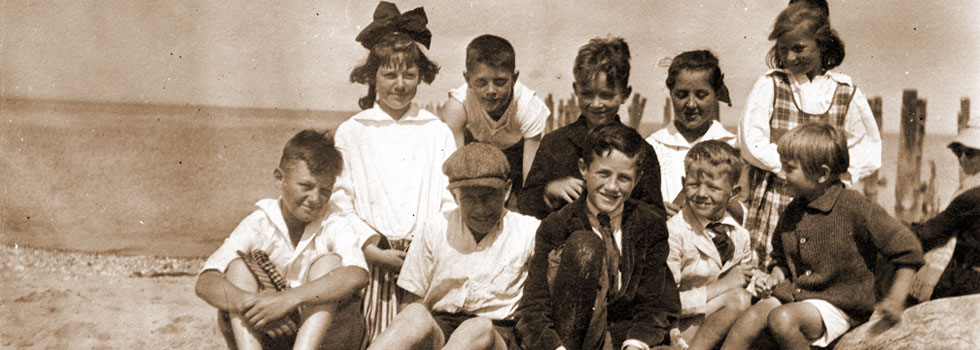
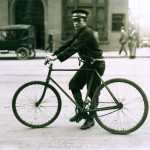
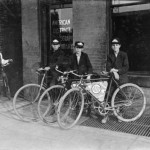
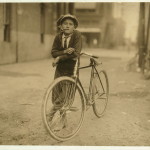
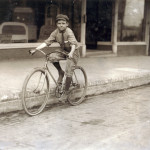
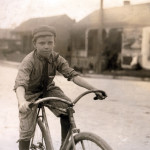
TrackBack URL
https://www.karenfurst.com/blog/telegraph-bicycle-messenger-boys/trackback/